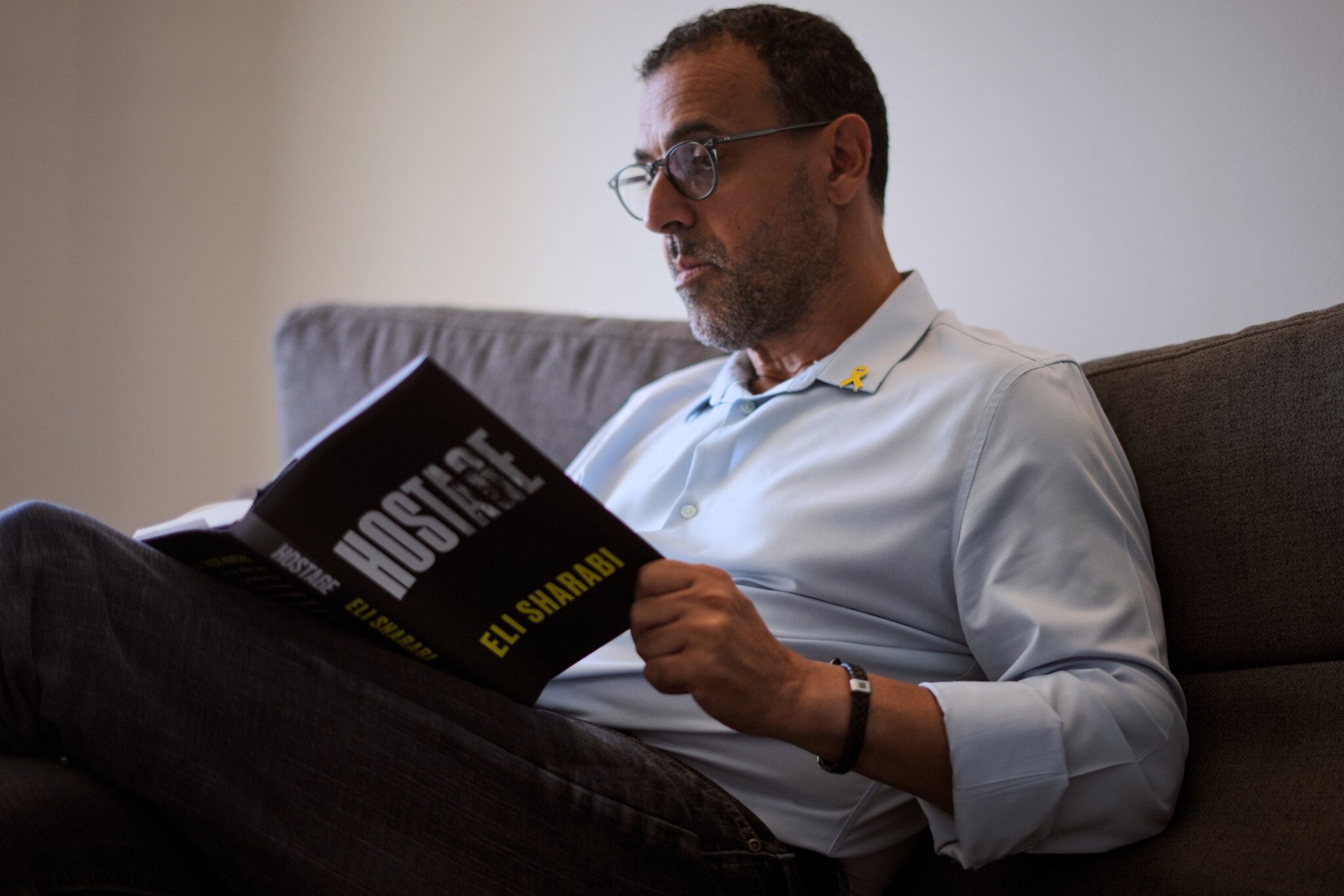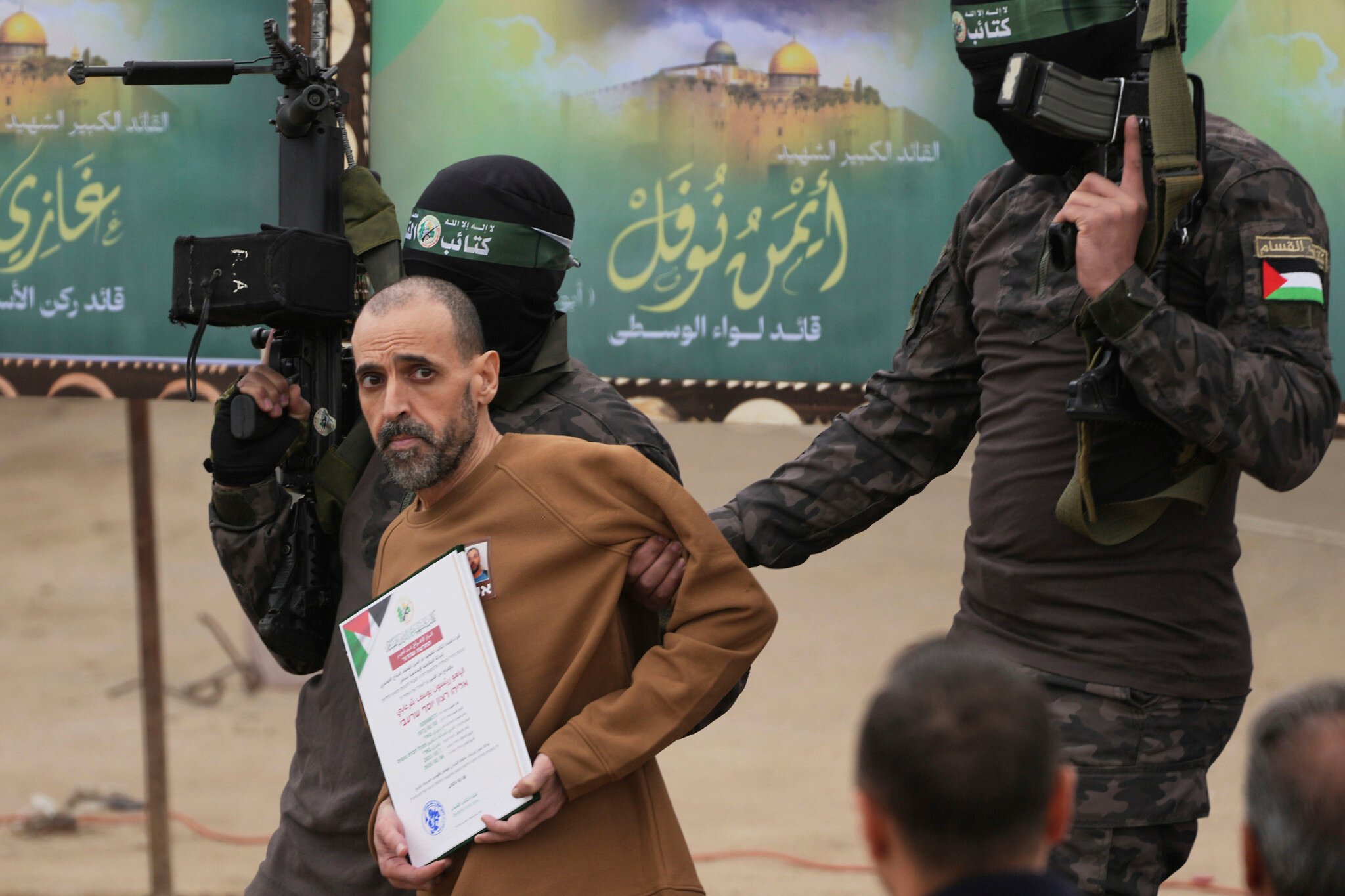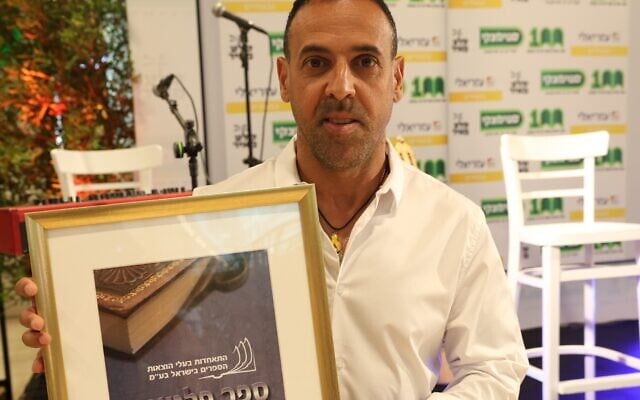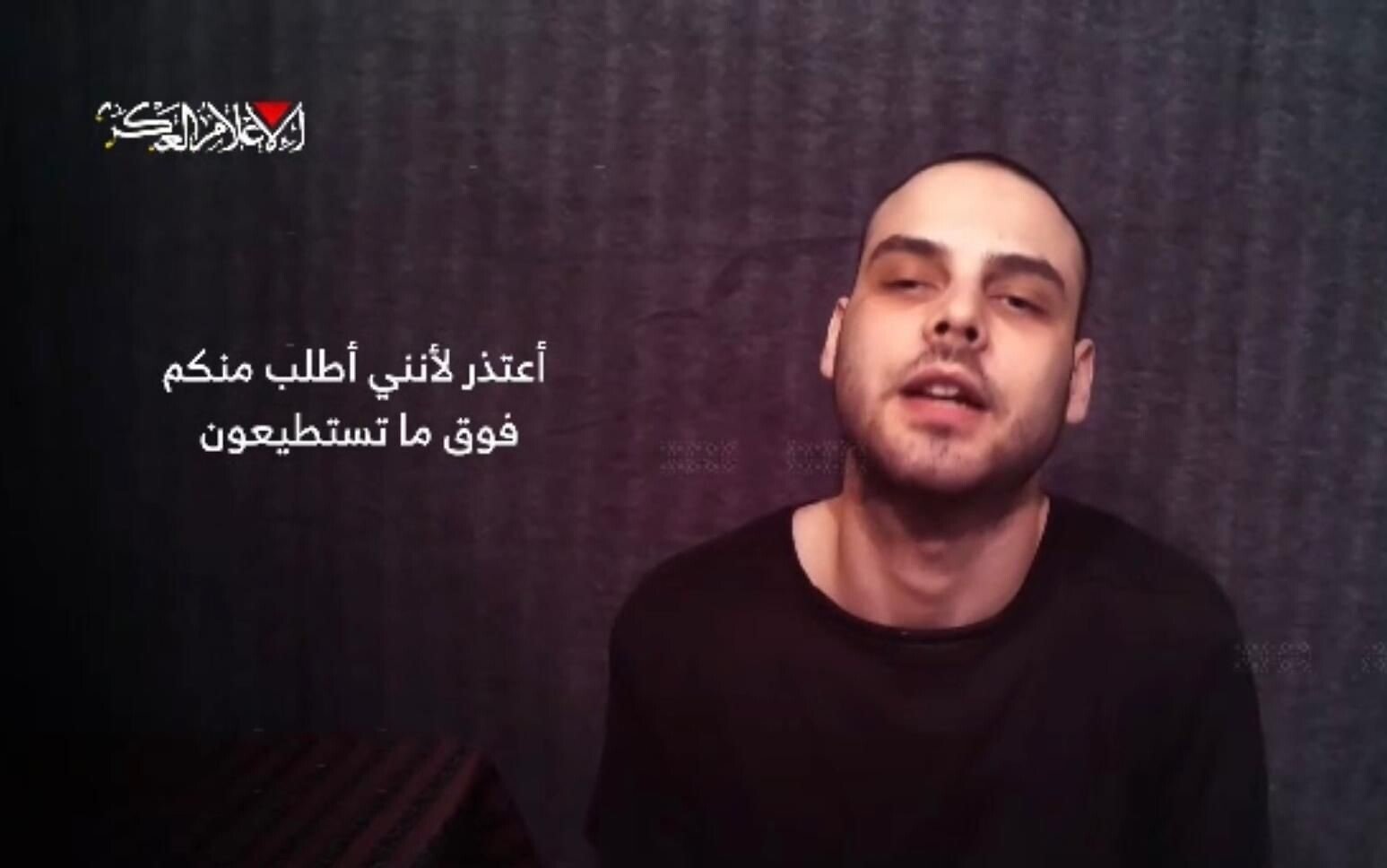


Eli Sharabi spent 16 months in filthy tunnels under the Gaza Strip with his legs chained, surviving on moldy pita. Two years after the Hamas onslaught that started the war in Gaza, he fears a fellow hostage he came to think of as an adopted son is enduring even worse.
Israel has battered its enemies across the region and devastated Gaza. But as it marks another grim war anniversary on Tuesday, terror groups in the Strip continue to hold 48 hostages, of whom 20 are believed to be alive. A new US-backed peace plan has raised hopes of bringing them home.
Sharabi, 53, was freed in February, after 497 days of captivity. It was only then that he learned that his wife and two teenage daughters had been killed in their home by Hamas-led terrorists on October 7, 2023, during the thousands-strong invasion, massacre and mass kidnapping that started the ongoing war.
Sharabi says there can be no closure for him until the return of all the hostages, including his closest companion in captivity, Alon Ohel, and the body of his older brother, Yossi.
Sharabi documented his experiences in “Hostage,” a book released in Hebrew earlier this year, which instantly became a bestseller. The English translation of the first memoir by a former hostage comes out on Tuesday, October 7.
In the book, Sharabi describes how he was mostly held in dark tunnels crawling with insects and rats. He and three fellow hostages were only allowed to wash every few months, and at one point an angry guard beat him up, breaking several ribs.
The only time they surfaced was when they were transferred through rubble-strewn streets from one tunnel to another.
“The most difficult thing was, of course, the starvation,” Sharabi said in an interview with The Associated Press. “It’s something you can’t really imagine, how hungry you can be.”
As the war wore on, the hostages went from two meals a day to one — usually moldy pita bread. Sharabi said his captors ate “like kings,” gleefully going through boxes of humanitarian aid intended for civilians.
He weighed just 44 kilograms (97 pounds) when he was freed. US President Donald Trump said he and the other two hostages released alongside him “looked like Holocaust survivors.”
Sharabi’s last memory of his family was the look of pure terror in their eyes as he was dragged out of his house in Kibbutz Be’eri. While in captivity, before he knew they were killed, he was determined to move his family far from the kibbutz, possibly to England, where his wife was from. He’s been back to the kibbutz only once, visiting outside his house.
He knows he will need to walk through his home at some point, as part of his rehabilitation process. He will need to see for himself the blood stains, the walls sprayed with bullets and the shattered windows. But he said he isn’t yet ready to go inside.
The kibbutz was devastated in the October 7 attack and suffered the highest loss of life of any town, with 101 civilians and 31 security personnel killed, and a further 30 residents and two more civilians taken hostage.
For the first few weeks, Sharabi was held in an apartment with a kidnapped Thai agricultural worker who could barely communicate in English, Hebrew or Arabic. After a weeklong ceasefire in November 2023 fell apart, he was moved into the tunnels and held with three Israelis who had been kidnapped from the Nova music festival.
Sharabi, nearly double the age of the other hostages, took on the role of a father figure.
He helped them create exercise programs to keep their bodies moving despite the chains on their legs. Each day, they tried to share something good that had happened — getting a bit more food, or not seeing an especially violent guard.
None of the men was religious before October 7, but in captivity, they prayed together regularly. On Friday nights, one of them would grasp a cup of water and recite the traditional Sabbath blessing made over wine. Often during those prayers, there were tears.
“You understand that every moment, they can kill you if they decide to do that, so you’re trying to find the light and the special moments,” he said. “Surviving is building from lots of small victories.”
After his release, Sharabi joined the campaign calling for the return of the remaining hostages. He wrote the book, met with Trump, and addressed the UN Security Council.
His frenetic activism is largely driven by his fears for 24-year-old Alon Ohel, still held in Gaza as Israel wages another major offensive.
In January, Hamas captors told Sharabi and the others that three of them would be released as part of a ceasefire agreed that month. When Ohel, a sensitive and talented piano player, realized he would be left behind, he had a panic attack, Sharabi said.
“We thought it would be the happiest message that we will ever get, the day they let you know that you’re going to be released, but because of Alon, it became very complicated,” he said. “The day I left him was one of my toughest days in captivity.”
The next time he saw Ohel was in a hostage video released last month, gaunt and pale.
Sharabi hopes the stark prose of his book takes readers into the tunnels. He wants Israel’s hawkish leaders, and anyone else with power or influence, to end the war and bring the captives home.
He wants Ohel to know that his loved ones are “fighting like lions” for his release.
“I’m sure you have the strength to stay alive in captivity and survive this hell,” Sharabi said, addressing Ohel. “Then one day, you will be with us. And we will do everything we promised with each other.”




